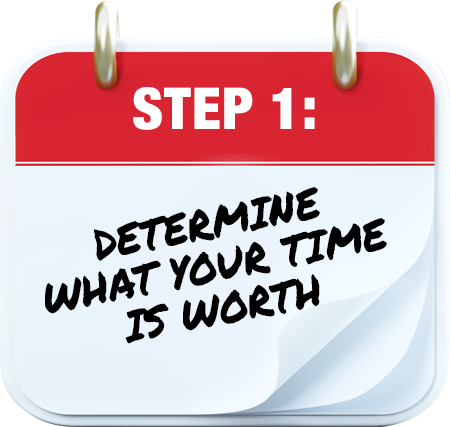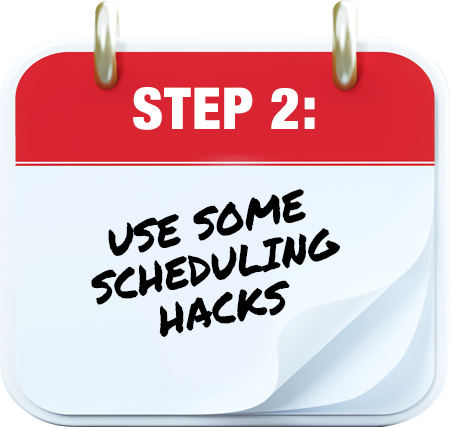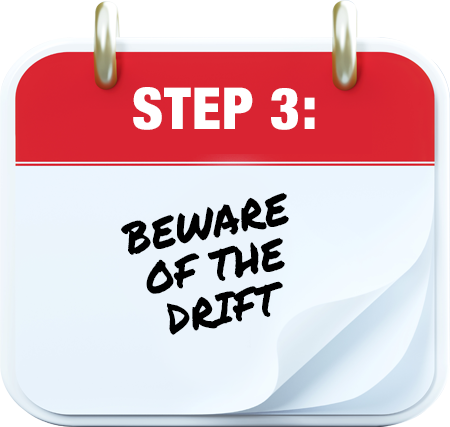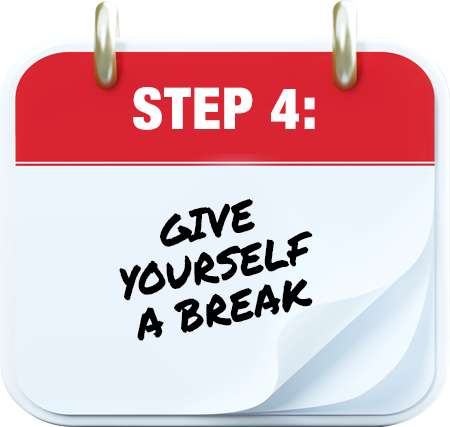Look closely at how you spend your time.
Think about all of the different ways you waste time at work throughout the day. Even when you think you’re being productive, the opposite may be true. The classic example is people who spend their day putting out fires. More often than not, these people are busy being busy. Whether they realize it or not, they use putting out fires as an excuse to not do the work necessary to accomplish the most important tasks.
If you work in an office, you see the people who spend their time at the water cooler and in the hallway gossiping or talking about television or sports. On a small scale, a couple of minutes here and there is perfectly fine. Everyone needs some form of release. But if you’re not paying attention, this can eat up a tremendous amount of time.
You may think that your days are packed from the time you get up to the time you go to bed, but a closer look often reveals that’s far from the case. Here’s the secret: you already have enough time.
Did you ever realize how much you get done the day before you go on vacation? You just crank out what you need to do. You suddenly become extremely good at prioritizing, and everything you do is a high-payoff activity. You don’t have time to be a fireman that day, and you get so much more accomplished than you normally do.
Why don’t you approach every day with that same mentality and urgency?
Here is a simple four-step process to eliminate time-wasting activities, make your days more productive, and put yourself in a better position to accomplish your goals:

- Determine What Your Time Is Worth
The first thing I ask my coaching clients to do is to determine what one hour of their time is worth. Start with the amount of money you currently earn, or better yet, the amount that you realistically hope to earn. Let’s say that it’s $100,000. If you work 40 hours a week for 50 weeks a year, that’s $50 an hour. That’s your number. That’s what one hour of your time is worth. But are you living up to your earning potential?
If you determine that you are worth $50 an hour, is it beneficial to spend an hour fixing a paper jam in the copy machine when there are others more qualified for it? That doesn’t mean you’re above those tasks, but the whole idea is to get the absolute most out of your time. I see so many people at work throughout the day engaging in tasks that are not the best use of their time.

- Scheduling Hacks
Being productive starts with scheduling. I start with my highest-payoff activities. These are sometimes family events, but during the weekday, they are typically my biggest revenue-generating tasks at work. Where I see people make mistakes is in scheduling these events, calls, or meetings back-to-back, so their entire day is packed with their highest payoff activities. On paper, it looks like a great way to be super productive, but in reality, it can set you back, because all it takes is for one thing to go wrong, or for some issue to pop up that you have to take care of. This can throw your entire schedule out of whack. All of a sudden, you find yourself playing catch-up and stuck in reaction mode.
Another way to get organized is to label your activities as red, yellow, or green lights. Your green-light activities are what get you paid. Yellow-light activities are more of a personal goal or something that you’re working on for yourself, while red-light activities are a waste of time. You then color-coordinate your calendar to better understand how you’re spending your time. The ultimate goal is to load up on the green-light activities and remove or delegate the red-light activities.
Make sure you’re getting those highest-payoff activities done every day and not wasting time on those red-light activities. If you find that you still have too many items left over, it’s not a scheduling problem, it’s a workload and expectations problem that has to be addressed; otherwise, you’re setting yourself up for failure.

- Beware of the Drift
It happens to everyone. At various points throughout the day, you lose focus, let things slide, don’t remain on task, and, ultimately, aren’t being true to your desires.. There is a fine line between taking a break and going down a rabbit hole of distractions. If you start talking to people at the office or messing around on social media, five minutes can easily turn into 10, 20, or more.
There is another side to this coin because success can sometimes hinder your progress as well. Sometimes when you experience success, you may start to feel content, and that’s dangerous because you take your foot off the gas. If you decelerate long enough, it can knock you off track and prevent you from achieving your goals. Be careful not to get complacent. Try to identify when that happens and course correct to shorten the duration of your drift.

- Give Yourself a Break
When I first started in the mortgage business, I was a low man on the totem pole, so it was my job to leave the office for coffee and lunch runs. Other people hated being a gopher, but I liked it because it gave me a chance to get out of the office and break up the day. Over time, that became a habit, so when I moved up in the ranks, I would still get out of the office.
When I’m at the office today, I’ll typically eat lunch at my desk, but between 11:30 a.m. and 12:30 p.m., I get up and get out. I don’t do any work or make any calls during that time. It’s only for 10 or 15 minutes, but I get a coffee and then listen to sports talk radio. That’s been a non-negotiable part of my routine for over 20 years. I didn’t realize the true benefit and how powerful it was until a couple of years ago when people kept telling me that I would always come back from these breaks ready to go. That’s when I made that connection.
This is not about being lazy. It’s about recharging because nobody can go full steam ahead every day. It’s important to recharge your battery. Whether I’m returning from a run, hike, bike ride, or even a 20-minute break during the workday, I’m not only refreshed and full of energy, but that’s when I have some of my best ideas.
Equally as important as breaks are what I like to call “white time.” Those are small blocks of time that I can utilize to deal with whatever comes down the pipe throughout the day. I never schedule more than two of my highest-payoff activities in a row without some white time in between. I’ve learned that it makes me more productive than if I tried to put my head down and bull-rush my way through the day.
Is there a pattern to your workday? The closer you look, you might notice that there are times when you are more productive and in the zone, and times when you aren’t productive or feel overwhelmed. It’s different for everyone, but try to schedule your white time or breaks around those activities that are the most difficult or that leave you feeling stressed or overwhelmed. Plan it out in advance. That short break might provide the release you need to make it through those more difficult tasks.
Try this. Set up your schedule to achieve optimal productivity, and then evaluate your execution. Look closely at how you spend your time. If you blocked off an hour for one of those highest-payoff activities, did you follow through? Were you productive? How well did you spend that hour? Are you really giving it everything you have? The simple act of auditing your day will help you better identify things you’re doing that might be killing your productivity without you even realizing it.
About the author
Bill Murphy, author of Thriving in the Storm, is a nationally recognized mortgage originator who has been a top producer for 25 years. Since 2017, he has served as a business coach for the Fairway Ignite program.
HR.com is the largest social network for HR professionals and the foremost, trusted industry resource for education, career development, and compliance. At HR.com, we are committed to educating and inspiring HR professionals and helping them build meaningful and impactful careers. To learn more and subscribe, visit HR.com.
Contents of this article remain the property of the author and/or publisher.
 Drive Results in Your Organization
Drive Results in Your Organization